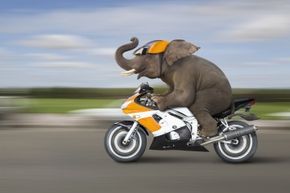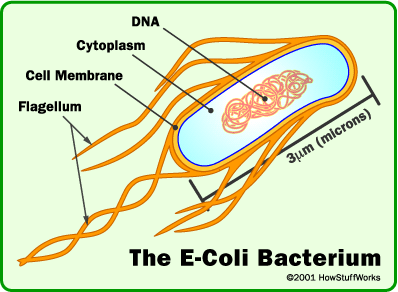Humans and animals are constantly evolving -- shedding less-favorable characteristics for features that maximize the odds of survival [source: ABC Science]. This process began with the very first living creatures and will continue until there's no life left. What makes modern evolution so fascinating is that in some cases, it's occurring at an accelerated rate. It's often so fast that humans can see the changes in just a few generations.
This rapid evolution could be caused by humans and may be spurred by climate change and other environmental factors. By pushing the environment to its limit, humans have forced animals to evolve in innovative ways, such as relying on hidden gene variations or genes that have long remained dormant to help them meet the demands of modern life.
Advertisement
The simple London Underground mosquito provides perhaps the best example of this speedy evolution. Just 150 years ago or so, workers were hard at work carving out the tunnels that would one day contain the Tube. At some point during this work, some sneaky mosquitoes slipped their way underground and settled in. Since that time, these underground dwellers have evolved into their own unique population. While the underground mosquitoes feast on humans, the ones that remained above the ground nosh strictly on birds. More importantly, the two groups can no longer interbreed successfully. While experts disagree whether these groups represent two unique species or two branches of the same species, it's clear that evolution has taken place in a relatively short period [source: Byrne and Nichols].
But how do slightly larger species fare? You may think that these creatures can't evolve as quickly as the common mosquito, but it turns out that rapid evolution isn't limited to the insect world. Sea urchins off the coast of Australia have recently diverged into two subspecies, which spawn at completely different times and can no longer mate successfully with one another [source: Binks et al]. Ten tiny lizards left on the island of Pod Mrcaru in 1971 underwent major changes in just three decades -- developing better bite strength, a larger head and a whole new digestive tract in order to survive in the local environment [source: ScienceDaily]. Antarctic blue and pygmy whales appear to be joining together and forming a hybrid species, possibly thanks to climate change [source: Attard et al].
For the ultimate example of evolution at work, consider the mighty elephant. Hunted in large numbers for their valuable tusks, these mighty beasts have evolved to eliminate tusks entirely. In 1969, slightly more than 10 percent of female elephants within a given area of Zambia were tusk-less; by 1989, that number had jumped to more than 38 percent [source: Jachmann]. This change came about thanks to a rare genetic mutation, which allows tusk-less elephants to thrive while their tusked brothers were driven nearly to extinction by poachers.
Advertisement


